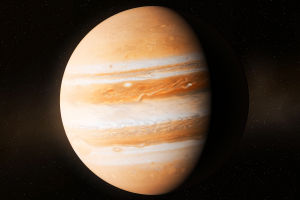Hey Lyykers! Ever wondered what it’s like to be caught in a Martian dust storm? Picture this: our brave Mars Rover is out there, struggling through a massive, swirling storm, with dust flying everywhere.
It’s like trying to find your way in a sandstorm, but way more intense and, well, on Mars!
Mars Storms: What’s the Big Deal?
Mars dust storms are no joke. These storms can cover the whole planet and last for months!
Imagine the whole place going dark and the wind howling at up to 60 miles per hour (97 kilometers per hour). The dust gets so thick that it blocks out the Sun and makes everything look like a spooky, red haze.
Cool fact: Mars dust can stay in the air for weeks or even months, making it really hard for rovers to see and work properly.
How Does Our Rover Handle This?
1. Autopilot Mode:
When the storm hits and visibility drops, the rover goes into autopilot mode. It uses sensors and cameras to figure out where it is and where it’s going. It’s like having a super-smart GPS that helps it avoid obstacles and find a safe path.
2. Camera Magic:
The rover’s cameras are pretty awesome. Even when dust is flying everywhere, these cameras are busy snapping pics and helping the rover figure out what’s around it. Sure, the dust makes it tough, but these cameras still provide a lot of important info.
3. Talking to Earth:
Even though the storm can mess with communication, the rover keeps in touch with mission control back on Earth. The team uses the data sent from the rover to adjust its plans and make sure it doesn’t get stuck. It’s like having a team of experts cheering you on from a distance!
4. Power Play:
Mars rovers run on solar power, but dust storms can cover those solar panels, making it hard to get energy. So, the rover might go into a “sleep mode” to save power. It’s kind of like when you save your phone’s battery by turning off apps you don’t need.
Real-Life Adventure: Opportunity Rover
Here’s a cool story: back in June 2018, the Opportunity rover got caught in a huge dust storm that covered the entire planet. The team on Earth had to wait and hope that the storm would clear so they could talk to the rover again. And guess what? Opportunity pulled through and kept going strong for years beyond its expected mission time. Talk about a survivor!
Fun fact: Opportunity was built for a 90-day mission but ended up exploring Mars for nearly 15 years!
Looking Ahead
As technology keeps advancing, future rovers will be even better at handling these storms. With new sensors and smarter systems, they’ll be able to explore Mars more efficiently, even when the weather gets wild.
So, next time you hear about a rover braving a Martian storm, remember just how incredible and resilient these little robots are. It’s like they’re the ultimate explorers, facing off against the harshest conditions the Red Planet can throw at them.
Catch you later with more space adventures!


